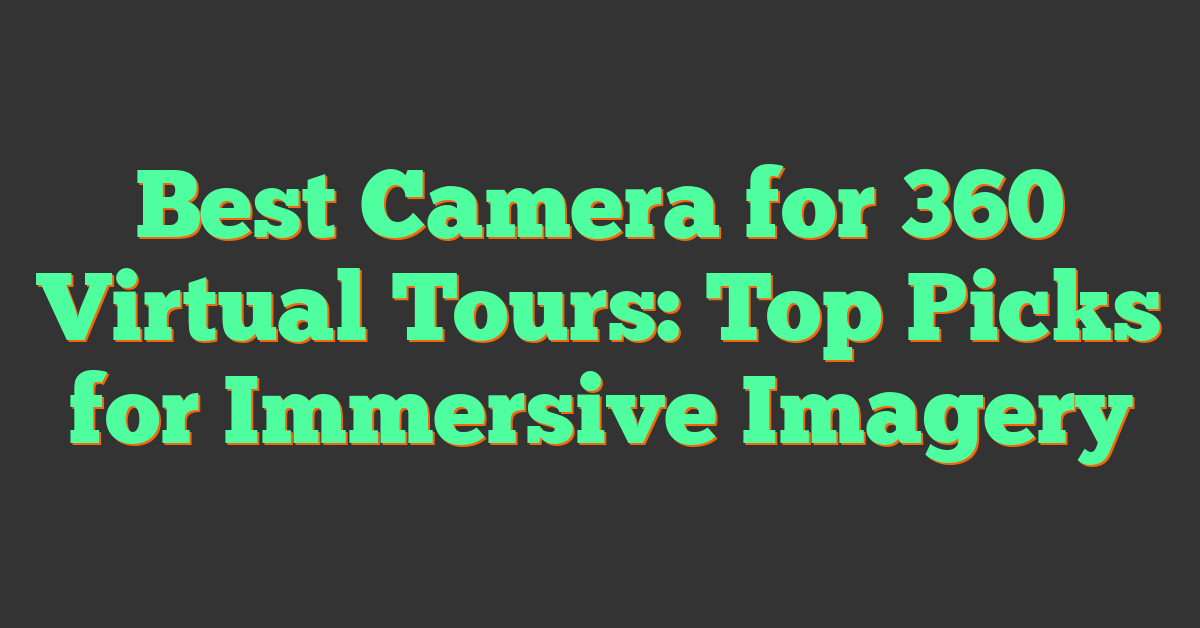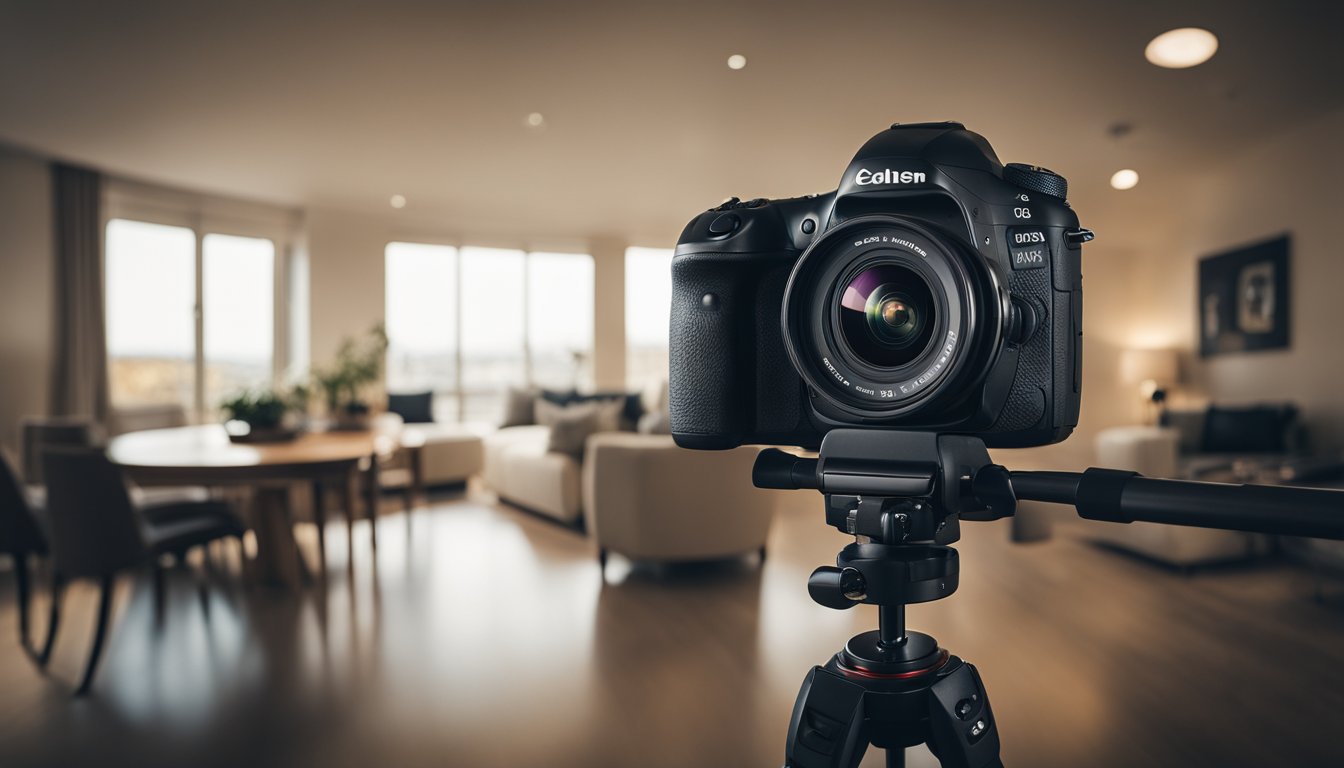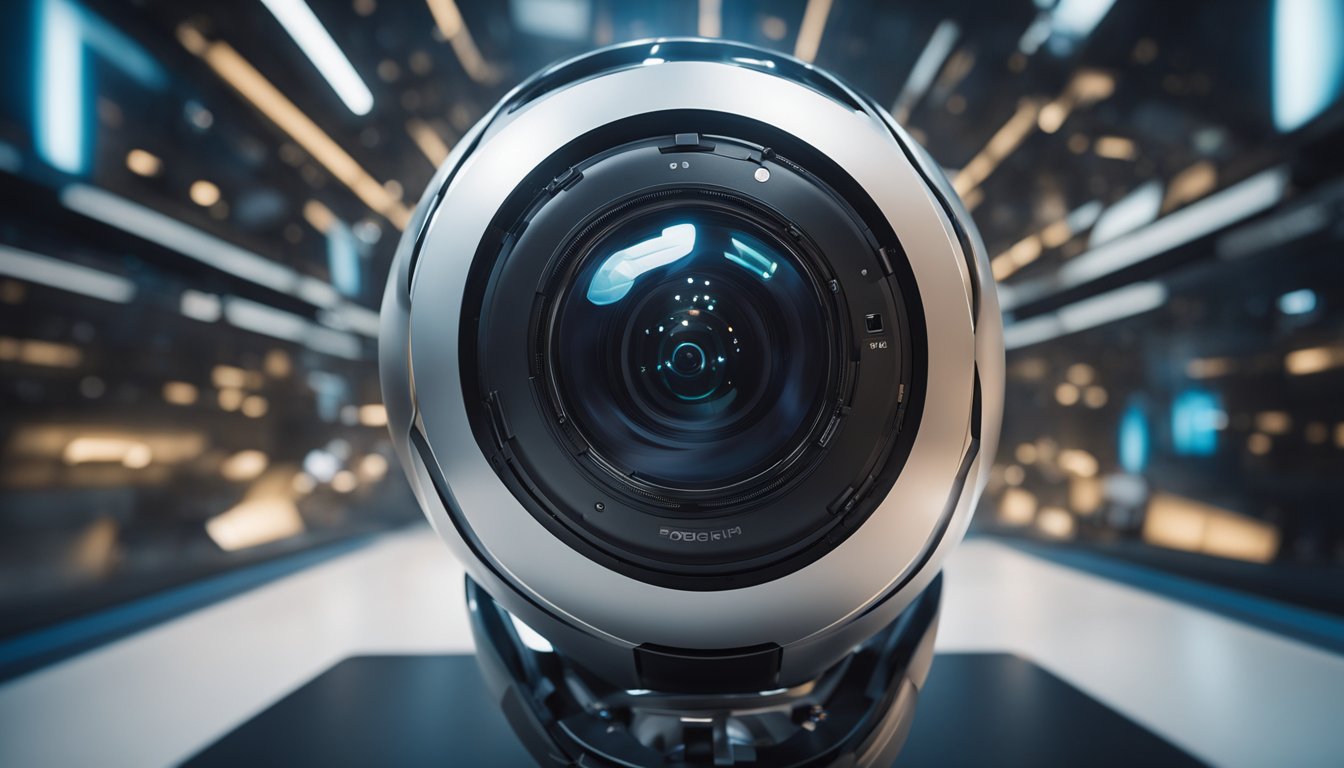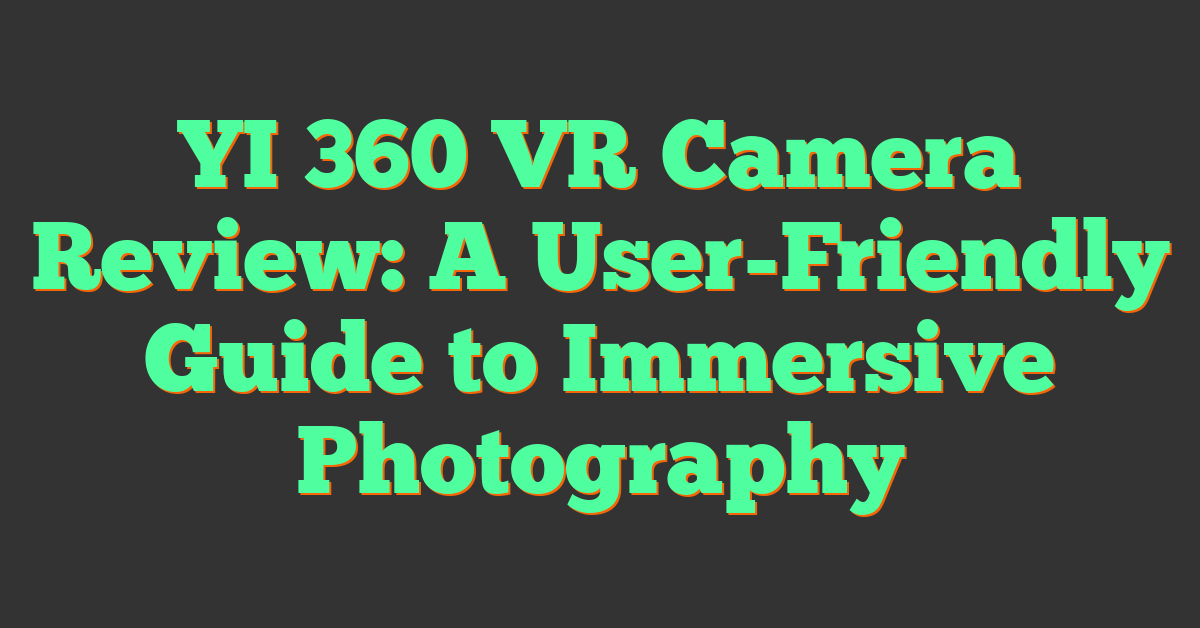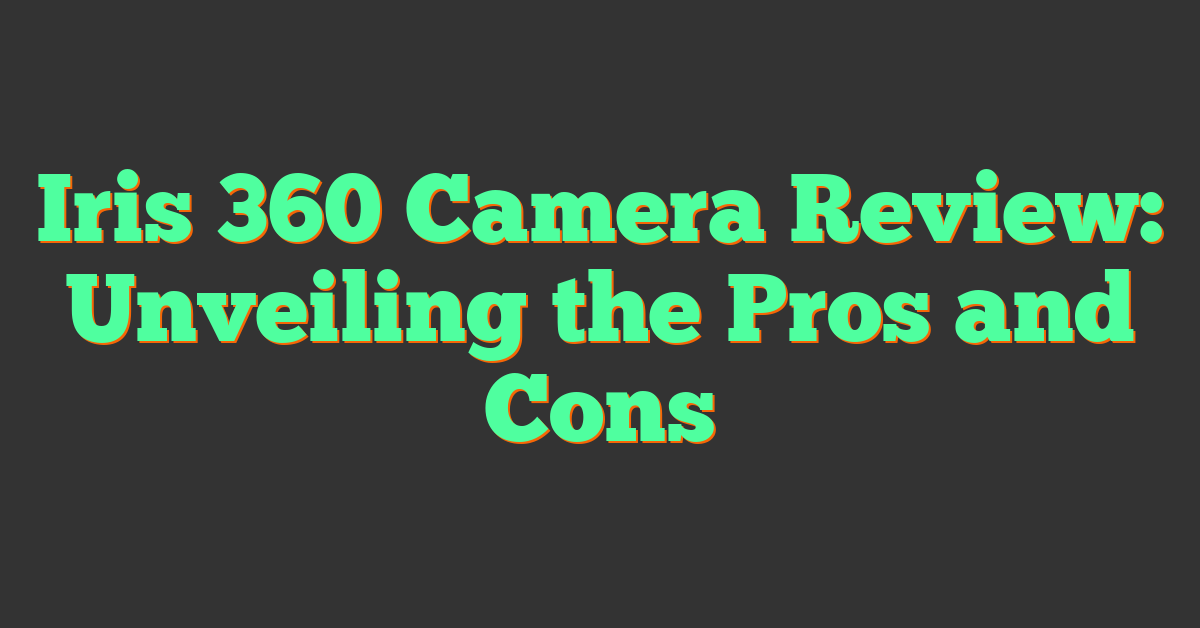In recent years, the rise of virtual tours has revolutionized the way we experience places without being physically present. Whether for real estate, travel vlogging, or immersive storytelling, 360 cameras have become essential tools for creating these experiences. The right 360 camera can transport viewers to a virtual space with stunning clarity and an all-encompassing perspective.
As technology advances, the market is flooded with various models, each boasting features that cater to different needs. From image quality to user-friendliness, it’s crucial to find a camera that aligns with your virtual tour objectives. Understanding what to look for in a 360 camera and how it complements the right software and accessories can elevate your virtual content to professional standards.
Key Takeaways
- A quality 360 camera is key for immersive virtual tours.
- Carefully consider features and ease of use when choosing a camera.
- Supportive accessories and software enhance the virtual tour experience.
Understanding 360 Virtual Tours
https://www.youtube.com/watch?v=H2WhIcY3rvo&embed=true
In the realm of digital real estate, 360 virtual tours stand out as an immersive experience, allowing you to explore a space as if you were there. These tours offer a complete view of a venue through panoramic images and videos.
Virtual Tour Basics
You might be familiar with traditional images and videos when browsing properties or venues online, but 360-degree virtual tours take it a step further. A virtual tour stitches together a series of 360-degree images or videos to create a seamless experience. You can look around in every direction — up, down, and all around you — just like in real life. Navigate from room to room with a simple click or swipe, giving you a comprehensive VR experience without needing special equipment.
The Evolution of Virtual Tours
The journey from simple photographs to interactive virtual tours is quite remarkable. What started off as panoramic photography has now evolved into sophisticated 3D VR content. In the past, you might have found it enough to view flat images, but with the advent of VR (Virtual Reality), the expectations have changed. These advanced visual tools have revolutionized how you experience spaces remotely. Now, high-quality 360-degree videos and images are crucial for a successful virtual tour, helping industries like real estate, tourism, and education provide a closer look at what they offer, far beyond static photos or graphics.
Choosing the Right 360 Camera
https://www.youtube.com/watch?v=5MvtlBYOFHg&embed=true
With the rise of virtual reality experiences, choosing the right 360 camera for creating virtual tours is crucial. You’ll want a camera that not only captures high-resolution images but also provides the flexibility you need as a content creator.
Camera Selection Criteria
When selecting a 360 camera for virtual tours, a few key criteria should guide your decision:
- Resolution: Look for cameras that offer at least 5.7K video resolution. This ensures your videos are crisp and immersive.
- Image Quality: High-quality stills are important. Seek out cameras with HDR capabilities for the best color and clarity.
- Lenses: Dual-lens systems are standard, but the quality of lens coatings can affect your output.
- Sensor Size: Larger sensors can capture more light, which equates to better image quality, especially in low-light conditions.
Remember, the needs of photographers can differ from those of content creators who prioritize video.
Comparing 360 Camera Features
Insta360 One RS: A modular camera known for its versatility — you can swap between 360 cam modules for 5.7K spherical footage or more traditional lenses for 4K content.
- Resolutions: 5.7K for 360-degree videos, 4K for traditional videos
- Use Case: Perfect for creators needing flexibility between 360 and standard footage
« Best 360 Cameras for YouTube: Top Picks for Immersive Video Content
Best 360 Cameras for Photos: Capturing Stunning Panoramas Made Easy »
GoPro Max: A well-rounded option offering maximized video resolution in a rugged body — ideal for action shots and outdoor adventures.
- Resolutions: Up to 5.6K for 360-degree footage
- Use Case: Suited for outdoor photographers who need durability alongside quality
Ricoh Theta X: A camera offering high resolution combined with excellent still-image capabilities, making it a strong contender for virtual tours.
- Resolutions: Video resolution not specified, high-resolution stills
- Use Case: Choose this for high-quality images in your 360 tours
By weighing the specific features against your needs in resolution, image quality, and the type of lenses they offer, you’ll find the right 360 camera to create content that stands out.
Top Picks for 360 Cameras
https://www.youtube.com/watch?v=qT851U-Zei8&embed=true
In your quest for the perfect 360 camera, whether for immersive virtual tours or capturing life’s panoramic views, it’s crucial to find one that balances quality, features, and price. Here’s a roundup of the best ones on the market, from high-end devices offering professional quality to more affordable options that still deliver great results.
High-End 360 Cameras
Insta360 X3: This is a standout choice, providing 5.7K30 video quality, robust stabilization, and a variety of creative modes. Its performance is comparable to professional gear, yet it’s user-friendly enough for enthusiasts. Read more about it at PCMag’s review of the Insta360 X3.
GoPro Max: With the ability to shoot 6K30 spherical video and handy features like Max HyperSmooth, this model is excellent for both action shots and professional-grade virtual tours. The GoPro Max is known for its durability, making it ideal for outdoor adventures.
Ricoh Theta Z1: Recognized particularly for its 1-inch sensors which are a rarity in 360-degree cameras, the Z1’s image quality is remarkable, offering 4K video and RAW photo capabilities. It’s quite suitable if you’re looking for a mirrorless camera experience in a compact form.
Kandao QooCam 8K: The name says it all – this device can capture 8K video, ensuring super-high-resolution footage for your virtual tours. It’s one of a few in the consumer market that offer such a high resolution, making it a future-proof investment. Learn more at Digital Camera World’s best 360 cameras.
Budget-Friendly Cameras
Insta360 ONE X2: This camera is a great value with its combination of affordability, features, and quality. It can shoot 5.7K video and includes an IPX8 waterproof rating, so no need to worry about weather conditions when shooting your tours.
Ricoh Theta SC2: For those of you on a tighter budget but still wanting high-quality results, the SC2 is a worthwhile option. Although it shoots in 4K, it offers a range of features typically found in pricier models, plus it’s compact and easy to use.
Ricoh Theta X: Although slightly pricier than the SC2, the Theta X is still within reach for budget-conscious users. It brings 5.7K video capability and an impressive feature set, offering value for money without breaking the bank. Check out more about this camera on TechRadar’s best 360-degree cameras.
When considering your purchase, remember that a camera’s price tag doesn’t always reflect its performance relative to your specific needs. Assess your priorities, whether it’s resolution, ease of use, or specific features, and let that guide your decision.
Features to Look For in a 360 Camera
https://www.youtube.com/watch?v=z53OuXQm-Yk&embed=true
When choosing a 360 camera for virtual tours, you’ll want to focus on key features that ensure high-quality imagery and practical usability. Consideration of resolution, battery life, and durability will affect your camera’s performance in various environments.
Resolution and Image Quality
High resolution and superior image quality are crucial for creating immersive 360 virtual tours. You’re looking for a camera that offers at least 4K resolution to ensure clear and detailed images. Cameras such as the Insta360 series and the GoPro Max provide excellent resolution and employ advanced image stabilization technologies such as flowstate stabilization and hypersmooth stabilization, which helps in producing steady and sharp images even when there are movements during the capture.
Battery Life and Portability
Battery life is a key factor, especially when shooting on location. You want a camera that can last through your shoot without constant recharges. The portability of the camera also makes a difference; lighter cameras are preferable for ease of use and transport. Reliable battery life of several hours will typically suffice for most virtual tour projects.
Water Resistance and Durability
For outdoor and adventure shots, water resistance is a feature you can’t overlook. Check the camera’s waterproof rating to ensure it can handle the conditions you’ll be shooting in. Cameras that are rated waterproof can be used in wetter conditions without worry. In terms of durability, a well-built camera that can withstand bumps and falls means less worry about damage and potential repair costs. Robust build quality is especially important if you’re capturing virtual tours in rugged environments.
Camera Accessories for Virtual Tours
https://www.youtube.com/watch?v=QDGa62anZsY&embed=true
To capture the full essence of a location, your virtual tour equipment should extend beyond just the camera. Let’s focus on the accessories that will enhance your ability to deliver professional-quality tours.
Essential Equipment
- Tripods: A sturdy tripod is fundamental for stabilizing your shots and ensuring that your virtual tour has a consistent point of view. Make sure to choose one with a strong construction and adjustable height capabilities to accommodate various shooting scenarios.
- Monopods: Sometimes in tighter spaces, you might prefer the flexibility of a monopod. An invisible selfie stick can be particularly useful for 360 cameras, as it becomes imperceptible in the final production, creating the illusion of a floating camera.
Additional Gadgets to Enhance Quality
- Drones: For sweeping aerial shots or to provide context to the location, drones are invaluable. They offer a unique perspective and can be a dramatic addition to your virtual tour.
- Microphones: Good audio quality can greatly increase the immersion of your virtual tour. Invest in high-quality microphones to ensure that your virtual tour’s audio is clear and free from distracting noises.
- Additional hardware: Consider the smaller pieces of equipment that can make a big difference, such as:
- Ball Heads: For smooth panning and tilting.
- Motorized Mounts: To automate and create even panning for video.
- Leveling Bases and Pano Heads: Essential for precision when aligning your 360 camera.
Remember to research and choose accessories that are compatible with your specific camera and enhance your overall production value.
Software Solutions for 360 Images and Videos
https://www.youtube.com/watch?v=ennYbERPjbU&embed=true
When creating 360 virtual tours, you’ll need robust software solutions for editing images and videos. The right tools can drastically enhance your final product.
Editing Programs
Editing programs are essential for refining your 360 images and videos. They enable you to adjust brightness, contrast, and color balance to make your visuals pop. For images, programs like Adobe Photoshop offer advanced options for fine-tuning.
- Image Editing Features to Look For:
- Brightness and contrast adjustments
- Color correction and filters
- Image Stabilization: Essential for cleaning up hand-held camera shots
For video editing, software like Adobe Premiere Pro excels with features for clip trimming, audio syncing, and more. Look for software that includes 360-degree-specific features like VR mode for real-time previews of your experience.
- Video Editing Features to Consider:
- Support for 4K and 8K resolutions
- VR mode preview
- Tools for adding text and transitions
Stitching Software
Stitching software seamlessly combines multiple images into a single spherical view. This is where the magic happens in 360-degree imaging.
-
Automatic Stitching: Saves time and simplifies the process. Software such as PTGui offers this feature, and it is invaluable for beginners and professionals alike.
-
Software Features for Effective Stitching:
- Support for various lens types and camera models
- Control points for fine adjustments
- Compatibility with panoramic heads and tripods
The Impact of Lighting and Environment
https://www.youtube.com/watch?v=qldZJrbb2jQ&embed=true
When creating 360 virtual tours, it is crucial that you manage lighting and environmental conditions effectively, as they can greatly affect photo quality and the overall immersive experience.
Dealing with Low Light Conditions
In low light scenarios, your virtual tour camera needs a good dynamic range to capture details without noise ruining the shot. Cameras like the Insta360 One RS thrive in such conditions, thanks to their ability to produce sharp, well-exposed images even when lighting isn’t ideal. You should also consider using a tripod and longer exposure settings to ensure that your images are clear and vibrant.
Shooting in Various Weather Scenarios
Outdoor real estate photography and virtual tours can be challenging, but the right equipment can mitigate issues caused by weather. Water-resistant cameras like the GoPro Max allow you to shoot in the rain without compromising on quality. For sunny days, look for cameras that handle a high dynamic range to avoid overexposed skies or underexposed shaded areas. Proper camera settings and sometimes even filters can help you balance such contrasts.
360 Cameras for Professional Use
https://www.youtube.com/watch?v=XVbOKYGnluk&embed=true
When you’re looking to step up your game in the real estate or content creation industry, the quality of your visual tools can make all the difference. High-quality 360 cameras not only open doors to immersive VR content but also ensure that your vlogs and real estate virtual tours look perfectly professional.
Real Estate Virtual Tours
For your real estate virtual tours, the camera’s ability to capture detailed images in various lighting conditions is crucial. Consider a camera like the GoPro MAX—known for its 5.6K30 spherical capabilities and excellent image stabilization. This device makes it easy for you to create high-quality virtual tours that can impress potential buyers and set you apart in the competitive real estate market.
Content Creation and Vlogging
As a content creator or vlogger, you should look for a 360 camera that excels in both video quality and portability. The Insta360 X3, for example, is celebrated not only for its 5.7K video resolution but also for its ease of use during live-streaming and its diverse functions suitable for vloggers. With features like 360 Time Lapse and PowerPano, it’s a versatile tool to boost your vlogging camera arsenal and cater to a variety of content creation needs.
Technological Advances in 360 Cameras
https://www.youtube.com/watch?v=NtDKjgofZtY&embed=true
360 cameras have evolved rapidly, now offering you immersive spherical video capabilities and smart, automated features that integrate seamlessly with VR and live-streaming platforms.
Spherical Video and VR
Your virtual reality (VR) experience heavily relies on seamless spherical video. Cameras like the Insta360 X3 not only capture everything around you in 360 degrees but also support VR playback. This means you can relive your adventures in a truly immersive way. Modern 360 cameras offer high-resolution video, providing you with crisp and clear content, ready for VR headsets or virtual tours on your smartphone or computer.
Smart Features and Automation
Smart features have brought a new level of convenience to shooting 360 videos. For example, some cameras come with automatic stitching, taking away the pain of manually merging different angles, making it almost effortless for you to produce a polished final video.
- GPS: Benefit from built-in GPS for geotagging which can enhance your virtual tour with location data.
- Wi-Fi: Cameras equipped with Wi-Fi allow direct live-streaming and can easily transfer files to your devices.
- Compatibility: 360 cameras now boast extensive compatibility, syncing with a range of smartphones and software for editing and sharing purposes.
360 cameras are becoming smarter and more user-friendly, offering features that adapt to your needs and expand the possibilities of content creation.
The Future of 360 Photography and Videography
As you delve into the world of 360 photography and videography, you’ll encounter continuous innovation and a transformative user experience. The eagerness to produce immersive content is driving vast changes, and understanding these can help you stay ahead in creating compelling virtual tours.
Trends to Watch
- Rising Demand for Virtual Reality (VR) Tours: With each passing year, your potential clients are growing more fascinated with VR. They want to feel present in the location, something 360-degree cameras excel at, as they offer a panoramic experience.
- Action Cams Integration: Action cameras are becoming more versatile. If you’re adventurous, you’ll love that new models of action cams now offer 360-degree capabilities, blending the ruggedness of an action cam with immersive footage.
Emerging Technologies
- 3D VR Content: Be ready for a surge in 3D content that elevates the ordinary VR experience to a new height. Capture not just a scene, but the depth and space within it, for an absolute immersive feel.
- Modular Design Cameras: Cameras with a modular design allow you to tailor your device to the shoot’s needs. A slice of 360-degree lens when you need to capture everything, or swap in another for a standard action shot, maximizing both flexibility and investment.
By keeping your finger on the pulse of these trends and emerging technologies, you’re equipping yourself to create more engaging and lifelike virtual tours for your viewers.
Frequently Asked Questions
https://www.youtube.com/watch?v=BuHkuJE3D8o&embed=true
Finding the right 360 camera for your virtual tours can be pivotal for producing high-quality and immersive experiences. This section covers some of the most common queries to help you make an informed decision.
What are the top rated 360 cameras for creating high-quality virtual tours?
High-resolution, sharp, and well-exposed images are essential in making your virtual tours engaging. Cameras that balance these qualities are considered top-rated for this purpose.
Which affordable 360 cameras are suitable for real estate virtual tours?
For those on a budget, there are 360 cameras that offer a good mix of quality and affordability, perfect for real estate applications where cost-efficiency is critical.
How does the Insta360 Virtual Tour Kit compare with other 360 cameras for professional use?
The Insta360 One RS is known for its modular design and 5.7K video quality, making it a versatile choice for professionals seeking high-resolution output and flexibility.
What features should I look for in a 360 camera when focusing on architecture?
In architectural photography, look for a 360 camera that captures detailed images and has good dynamic range to accurately render spaces.
Can you recommend a 3D camera that balances quality with cost for real estate photography?
For real estate photography, selecting a camera that delivers 3D captures at a reasonable price point can be beneficial for showcasing properties effectively.
What are the benefits of using a Matterport camera for 360 virtual tours?
Matterport cameras specialize in creating detailed 3D models and rich virtual environments, advantageous for clients needing comprehensive property walkthroughs.

